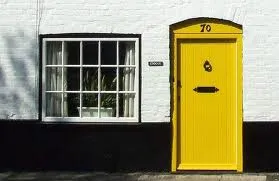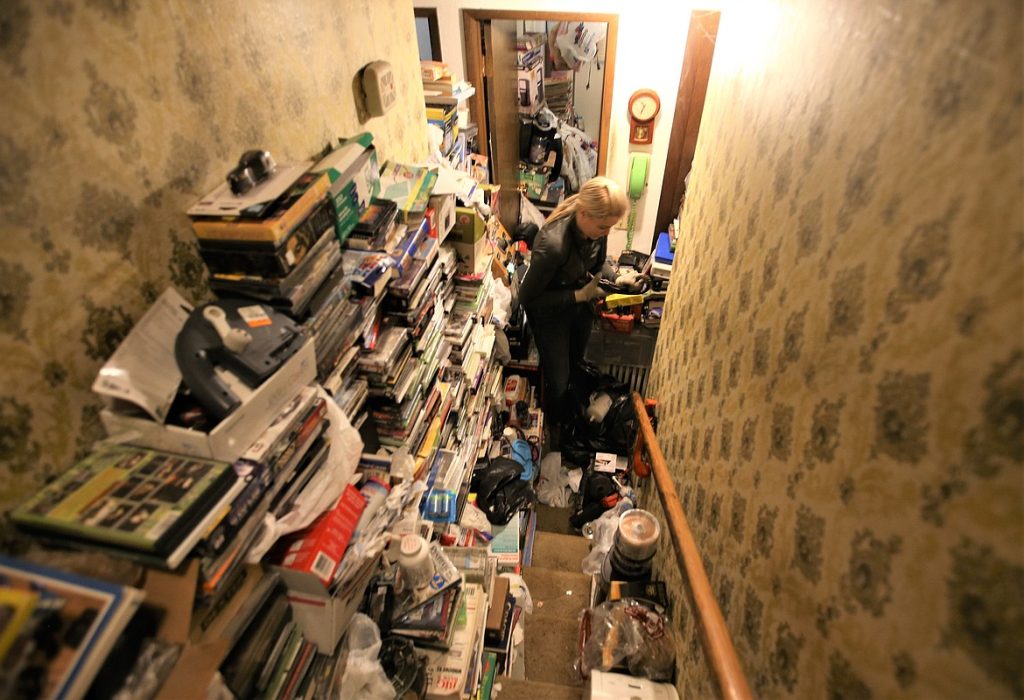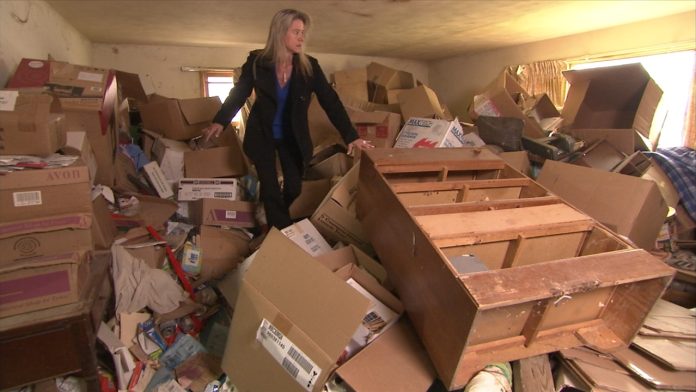Behind that brightly painted yellow door lives a hoarder. From the outside, they blend in to their neighborhood seamlessly. Without opening the front door and entering, you would never know what lies in wait inside.

What do hoarders collect? Anything and everything. Some hoarders simply hang on to every newspaper and magazine they’ve ever purchased. There are repetitive stacks four feet high through out the house. Some hoarders design narrow walkways through the maze of books and magazines, which allows them to access to the rooms in their houses.
For the majority of us, the idea of hoarding anything seems bizarre. We would quickly load up garbage bags and rid ourselves of the clutter. But hoarders aren’t bothered by the endless piles of junk through out their homes. If anything, it gives them comfort.
Scientist may have discovered a clue as to why hoarders can function in a dysfunctional environment. It seems the part of the brain network that helps us make an informed decision as to what should be kept or discarded, is malfunctioning in hoarders.
David Tolin, director of the Anxiety Disorders Center at The Institute of Living in Hartford, Conn has stated: “When you go into a house like that you’ve got to start thinking, ‘How can this person live this way’? It can be maddening if you don’t have this problem. But hoarders don’t really seem to recognize or appreciate it. The part of the brain that should be saying this is important is under-active.”
Tolin, also an adjunct associate professor of psychiatry at the Yale University School of Medicine, scanned 43 brains of hoarders, to 31 patients with obsessive-compulsive disorder and 33 healthy volunteers. Participants were instructed to clear a counter top at home of all papers, putting the papers in bags and bringing those bags with them to the center.
Tolin told the participants that they would not throw away anything the participants wanted to keep. The papers were put in two boxes labeled “My Stuff” and “Your Stuff”. While connected to a brain scanner, the volunteers watched as a researcher took a piece of paper from each box and asked each volunteer if that paper should be shredded.
There was very little activity in the brain network that includes the insula and the anterior cingulated cortex, when Hoarders looked at someone else’s junk. However, when Hoarders were asked if their papers should be shredded, the network sparked wildly.
“These two regions are commonly thought to constitute a network involved with the understanding of the relative importance or significance of something,” Tomlin said. “when hoarding participants were not making a decision that was personally relevant it was underactive. That may explain how a person can live in a horrible environment and not seem to care about it. The flip side is that when there’s a personally relevant decision in front of them, such as whether to discard something they own, the region gets hyperactive and they are overwhelmed.”
Tolin felt the hyperactivity sparked un unpleasant sensation, so hoarders avoid making those decisions to avoid the feeling. No one knows if hoarders are born with this wiring of their brains, or if the right environmental factors simply set the hoarder in to motion. Tolin stated this is possibly why conventional treatments of cognitive behavioral therapy do not work well.
Tolin said, “Part of what we’re doing is teaching and drilling the hoarder on appropriate decision
making.” Tolin said a therapist might coach a hoarder by going through a pile of papers and asking questions that naturally come to others. Such as; is this something I’ve used in the last six months? If I didn’t have this would I be worse off? Is this of good quality and worth keeping?
Hoarders are used to responding to the overwhelming impact of these brain regions. When they start practicing doing it this way, they are actually teaching their brains not to have that same reaction.

Compulsive Hoarding Disorder can be characterized in two parts of a whole:
(1) the accumulation of physical things that have little or no value, and
(2) the difficulty in discarding these accumulated things. Among the most common things that are collected are newspapers, mail, lists, and notes.
Compulsive Hoarding Disorder is said to be interconnected and/or related to other disorders, including depression, social anxiety, and bipolar disorder. It may also be seen in patients who exhibit anorexia nervosa, schizophrenia, dementia, and other psychotic disorders.
When seen in conjunction with other diseases, it is most often seen alongside Obsessive-Compulsive disorder. Compulsive Hoarding Disorder may run in families.
Compulsive hoarding may be caused by problems in the following areas: information processing, beliefs about possessions, and emotional distress about discarding possessions. In information processing, people may have difficulty remembering and knowing what to do about their possessions.
Exaggerated belief in the value of possessions means that people may think of their possessions as an indispensable part of them, even if their possessions amount to nothing more than a pile of torn newspapers or paperclips. Emotional distress from discarding possessions also comes from having unnecessary value attached to them, and hence the possessor may have anxiety and worry when discarding his or her possessions.
People with compulsive hoarding disorder may also have difficulty socializing, as they are concerned about the embarrassment their often immense clutter could cause.
Compulsive hoarding can be said to eventually lead to isolation because of this embarrassment.





